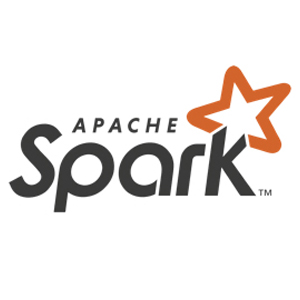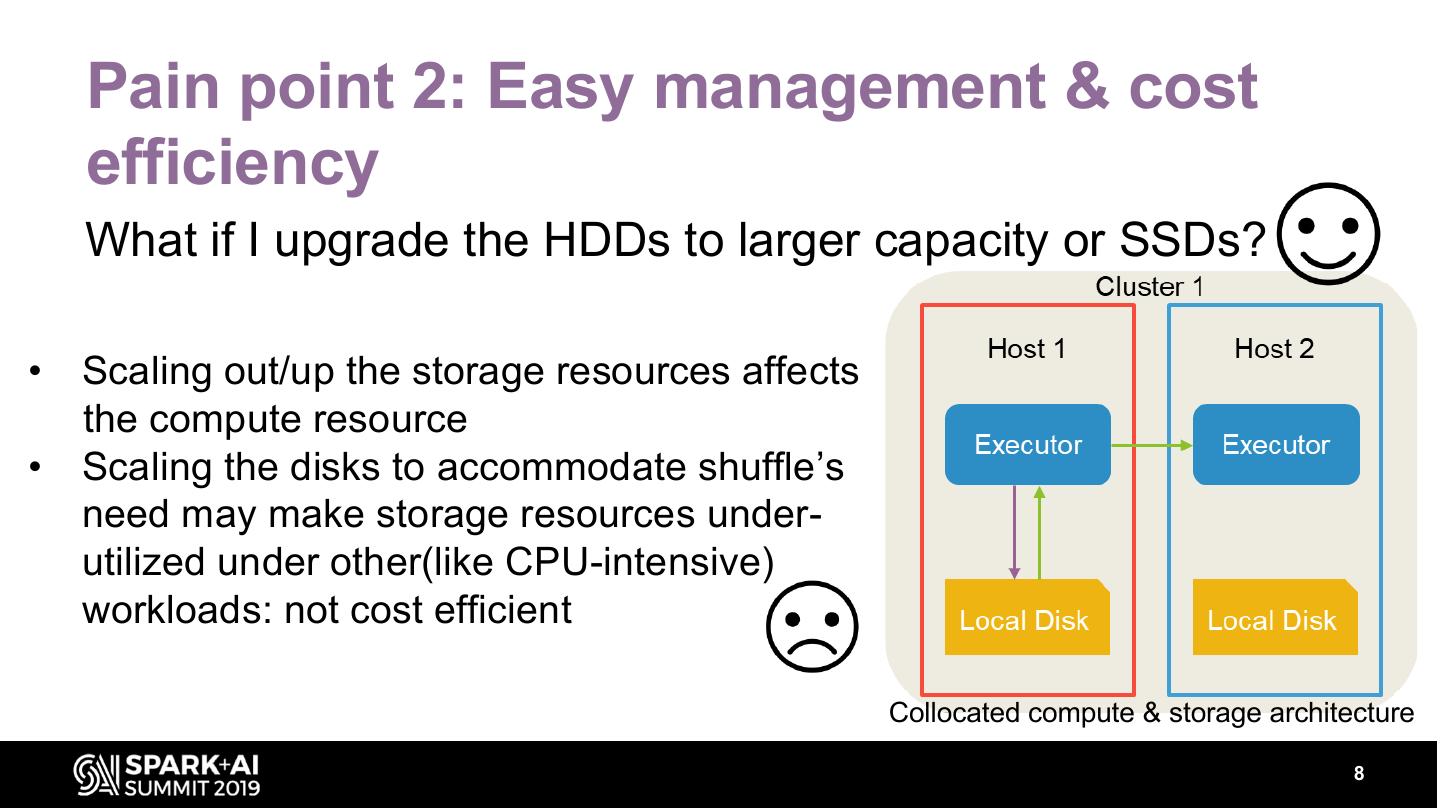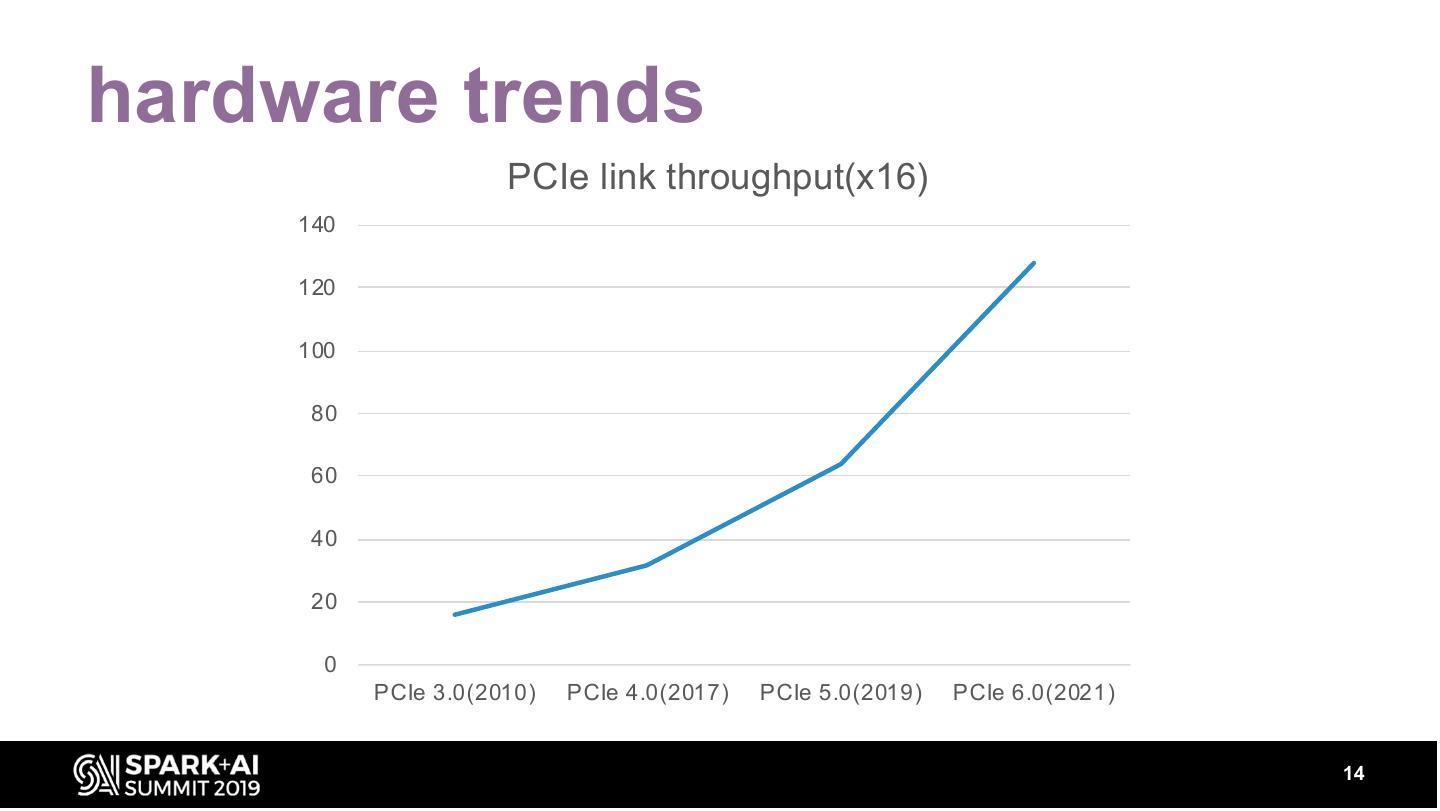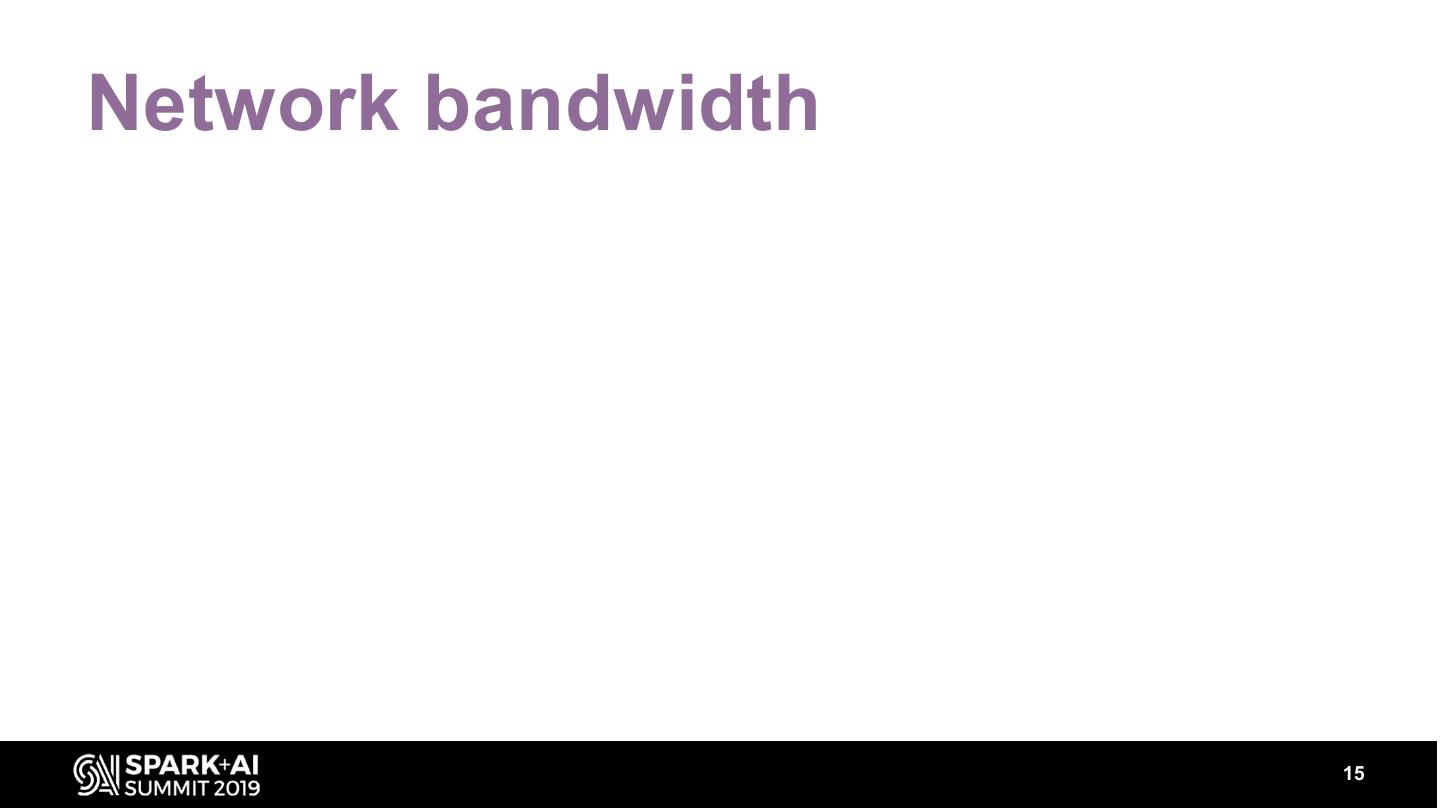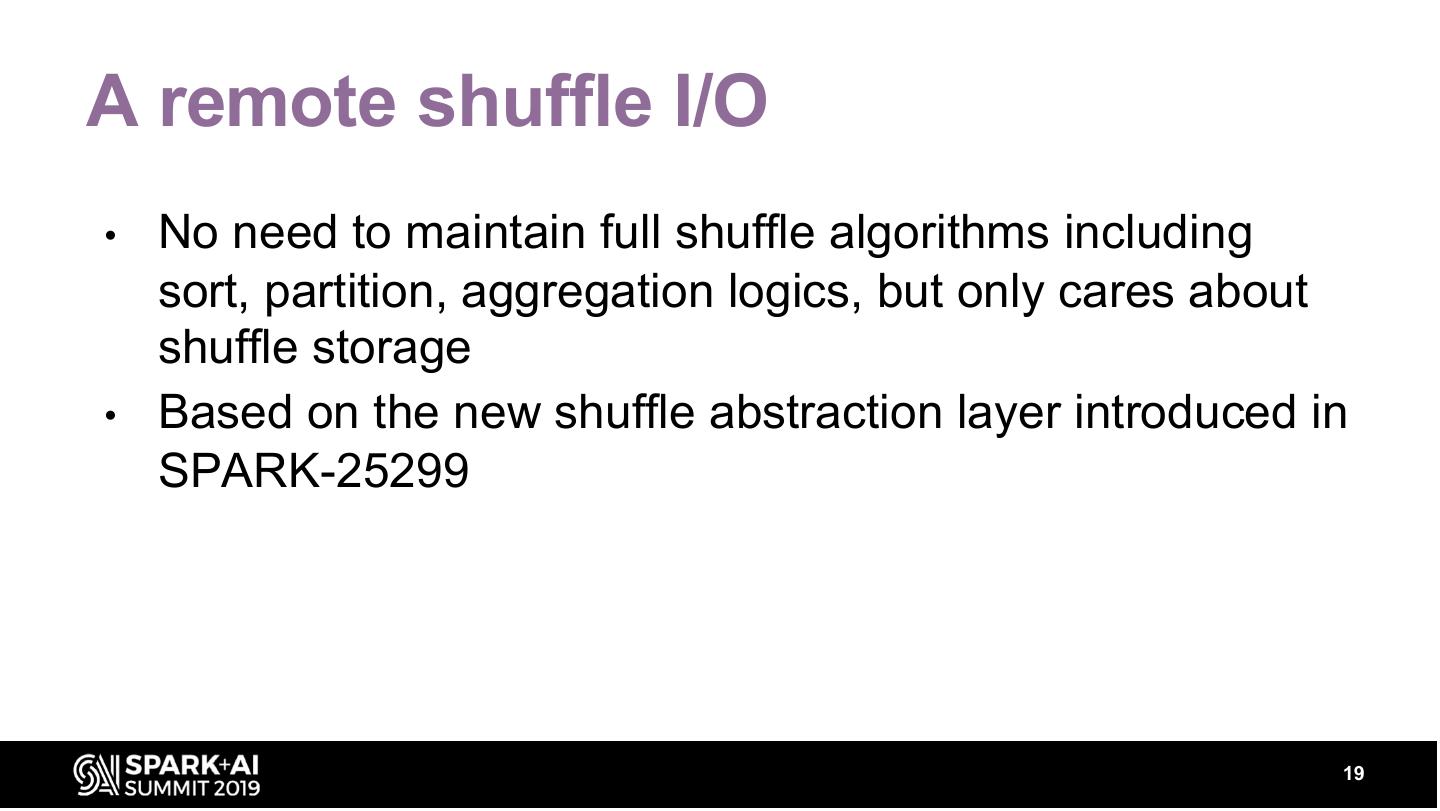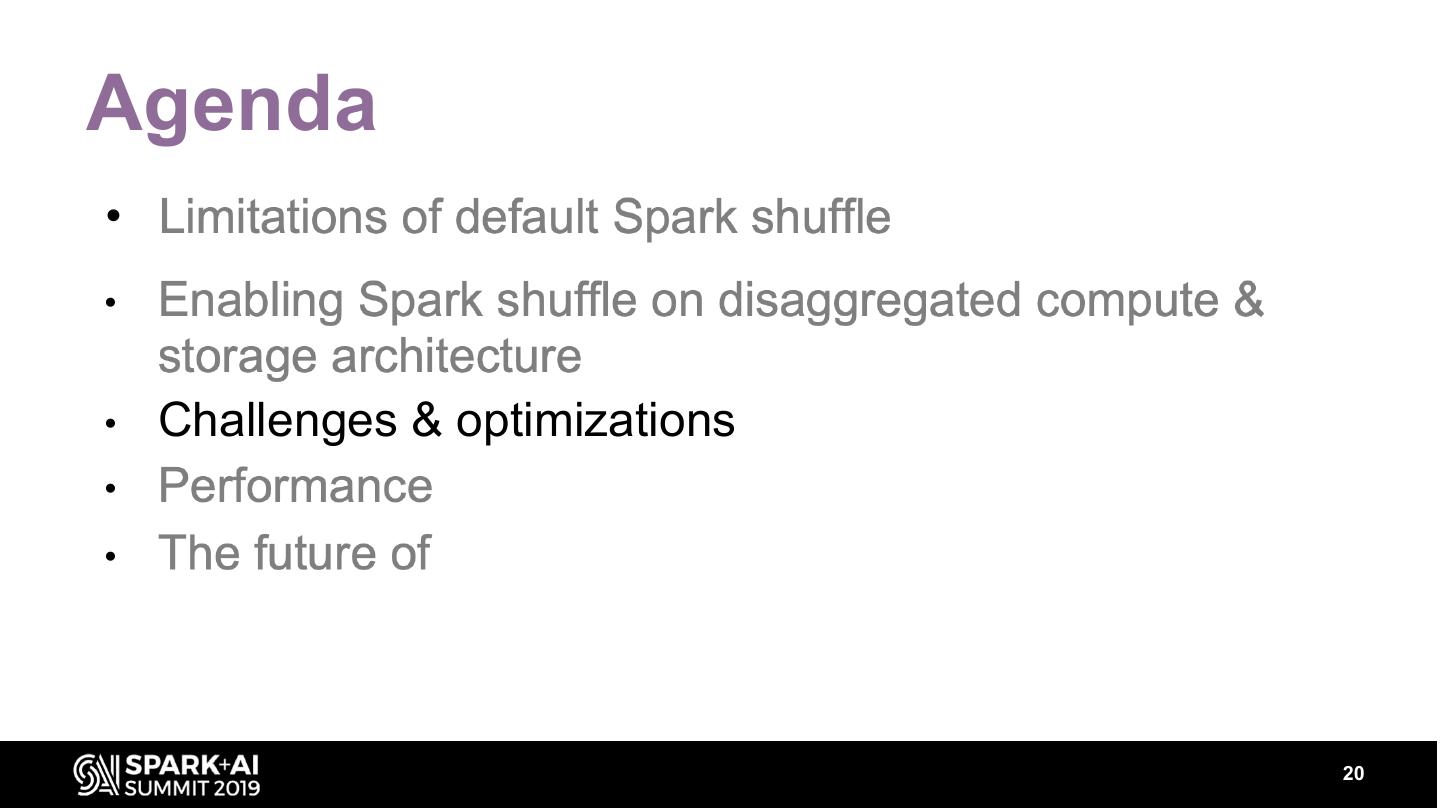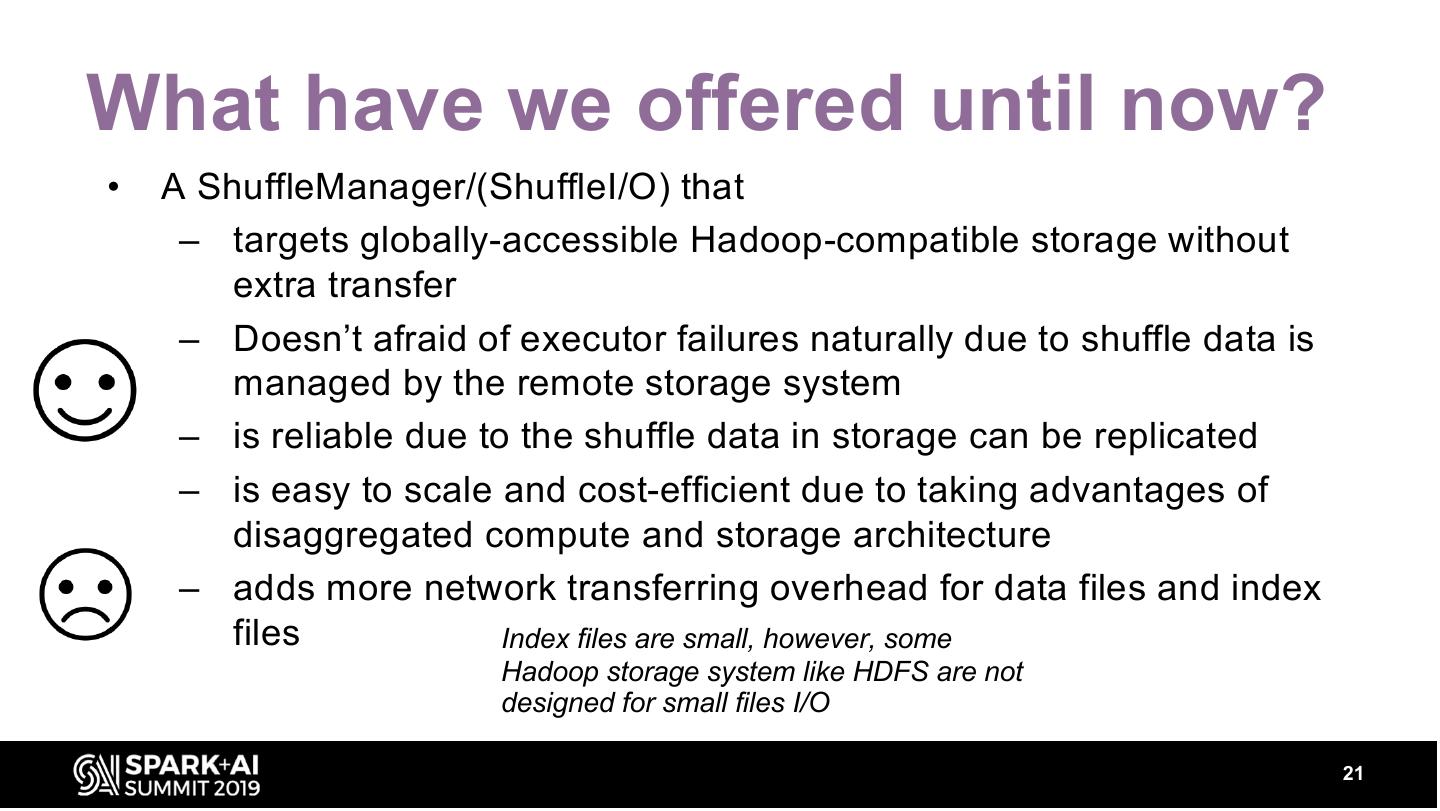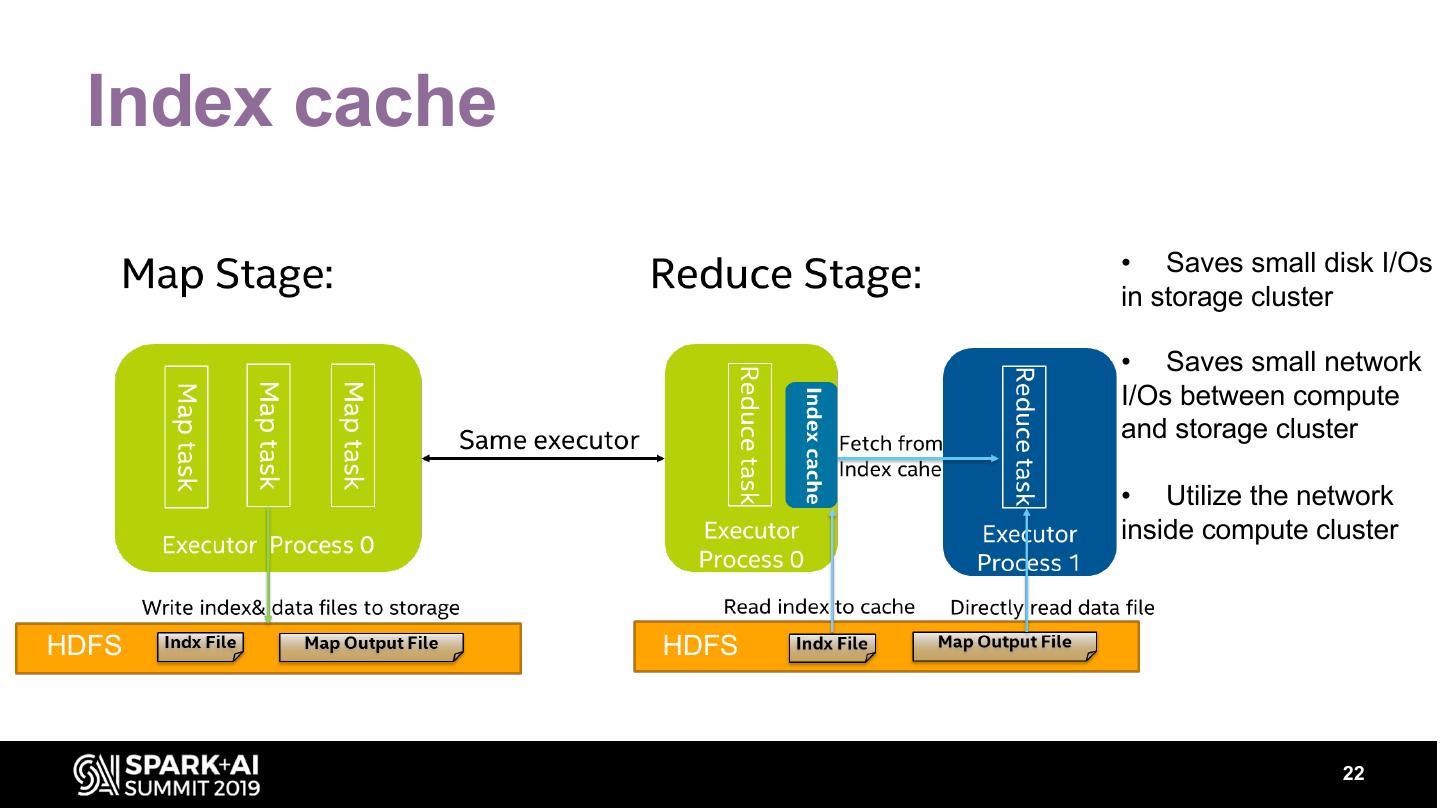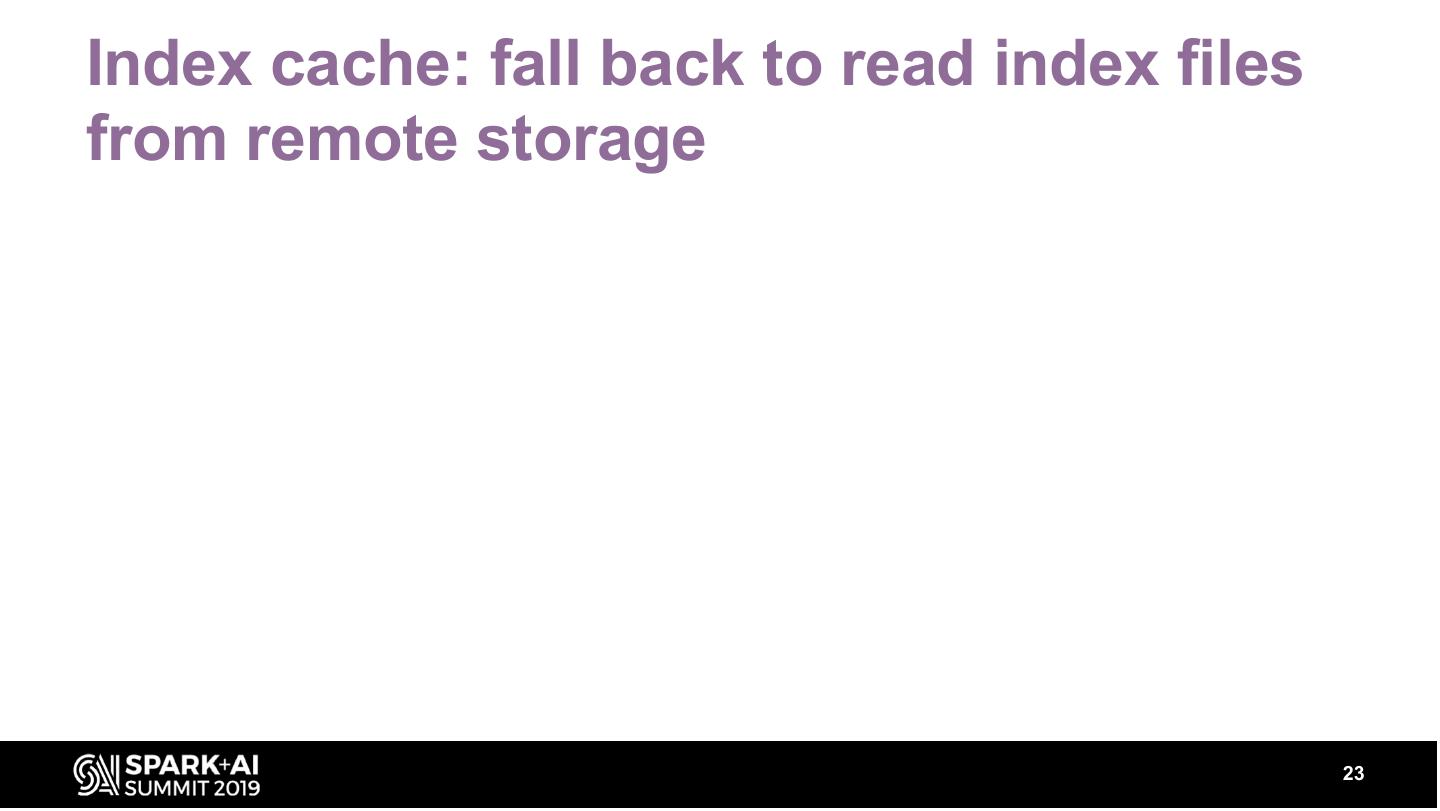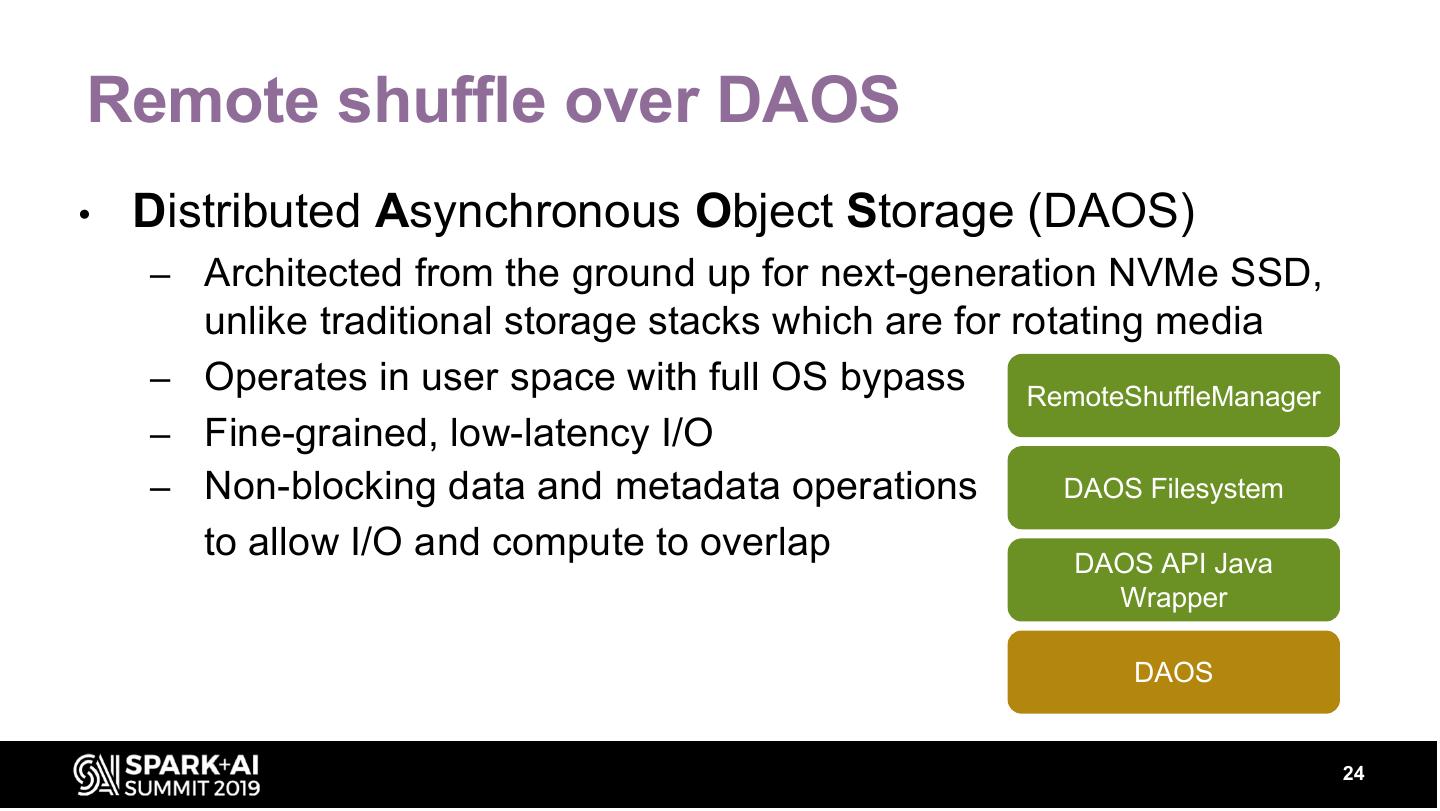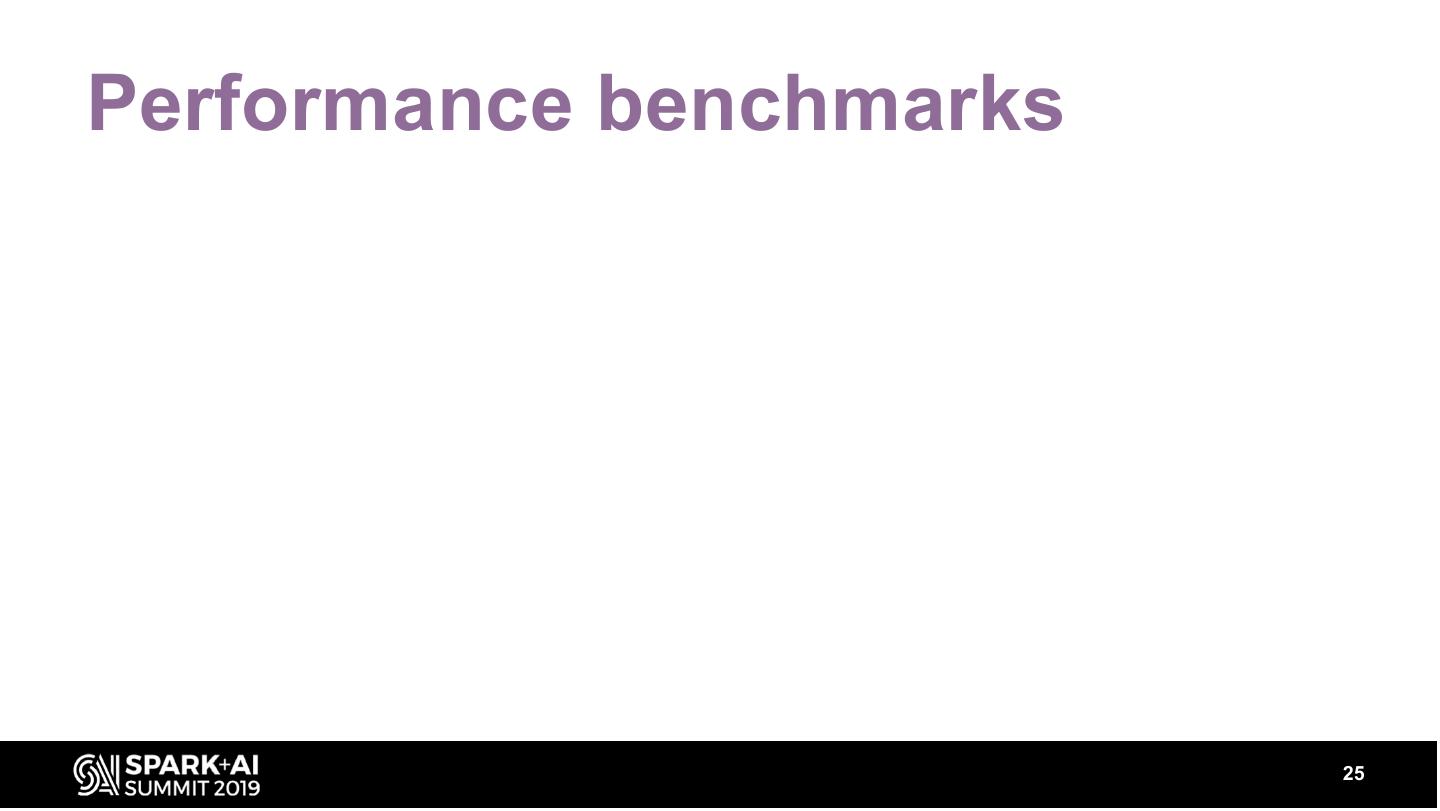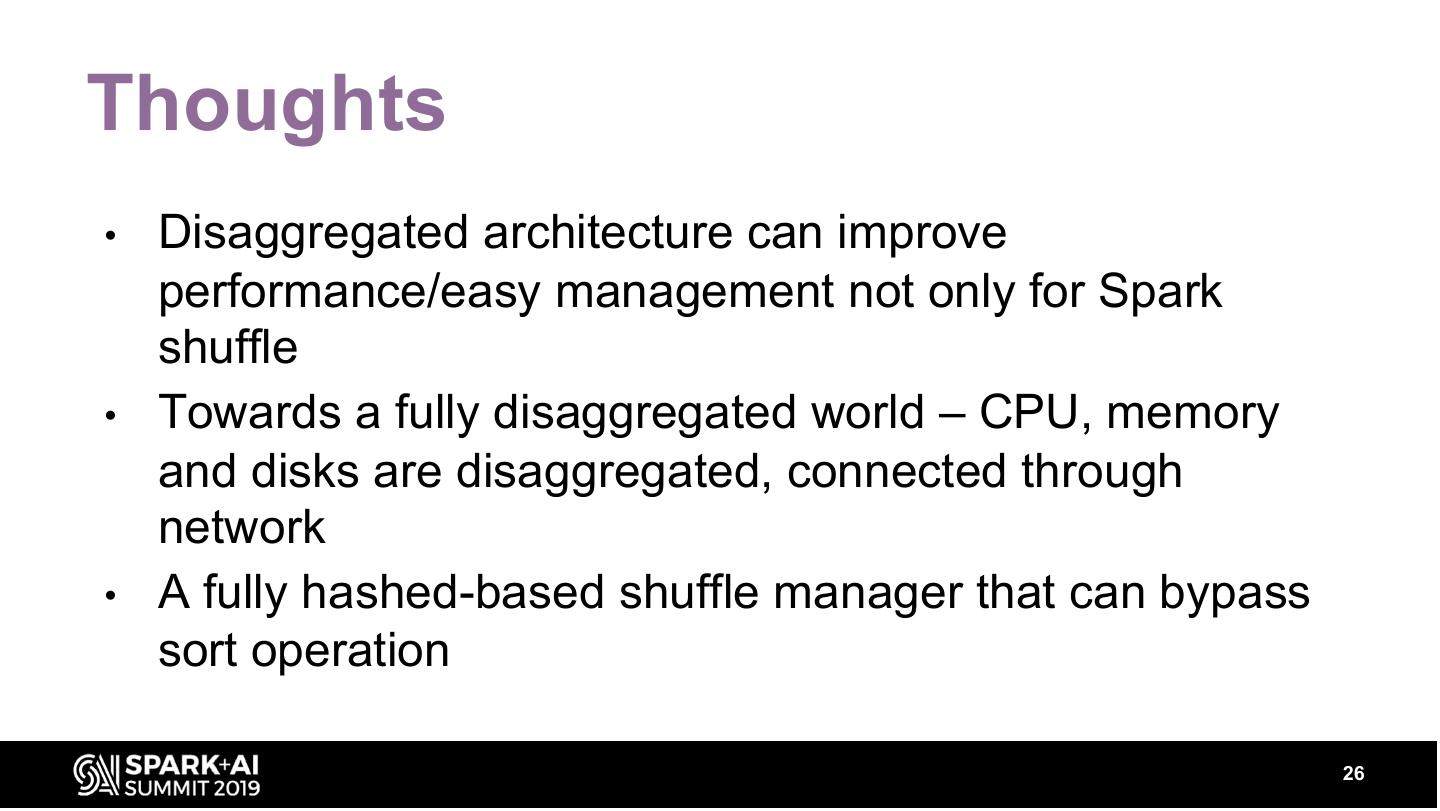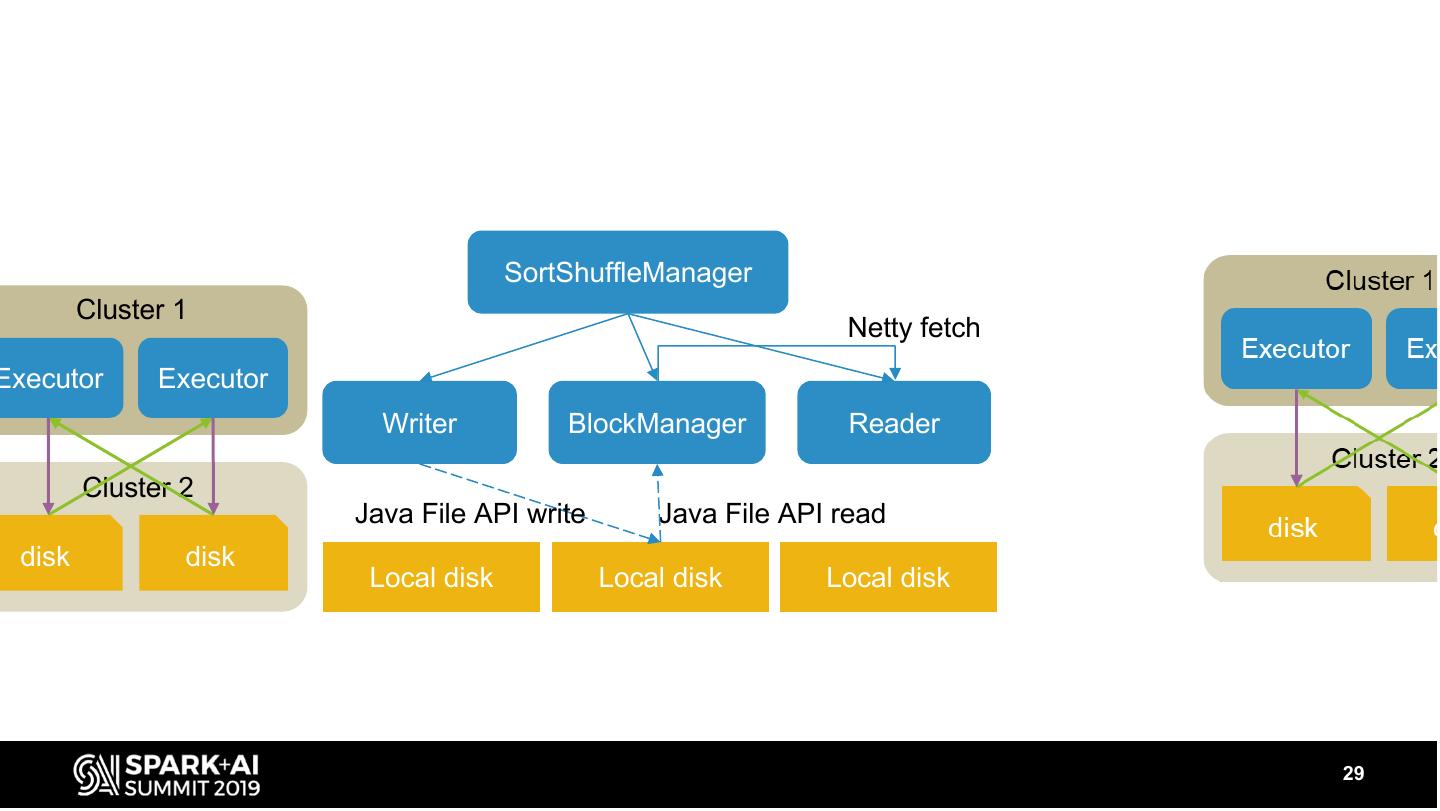- 快召唤伙伴们来围观吧
- 微博 QQ QQ空间 贴吧
- 文档嵌入链接
- 复制
- 微信扫一扫分享
- 已成功复制到剪贴板
Improving Apache Spark by Taking Advantage of Disaggregated Architecture
Shuffle in Apache Spark is an intermediate phrase redistributing data across computing units, which has one important primitive that the shuffle data is persisted on local disks. This architecture suffers from some scalability and reliability issues. Moreover, the assumptions of collocated storage do not always hold in today’s data centers. The hardware trend is moving to disaggregated storage and compute architecture for better cost efficiency and scalability.
To address the issues of Spark shuffle and support disaggregated storage and compute architecture, we implemented a new remote Spark shuffle manager. This new architecture writes shuffle data to a remote cluster with different Hadoop-compatible filesystem backends.
Firstly, the failure of compute nodes will no longer cause shuffle data recomputation. Spark executors can also be allocated and recycled dynamically which results in better resource utilization.
Secondly, for most customers currently running Spark with collocated storage, it is usually challenging for them to upgrade the disks on every node to latest hardware like NVMe SSD and persistent memory because of cost consideration and system compatibility. With this new shuffle manager, they are free to build a separated cluster storing and serving the shuffle data, leveraging the latest hardware to improve the performance and reliability.
Thirdly, in HPC world, more customers are trying Spark as their high performance data analytics tools, while storage and compute in HPC clusters are typically disaggregated. This work will make their life easier.
In this talk, we will present an overview of the issues of the current Spark shuffle implementation, the design of new remote shuffle manager, and a performance study of the work.
展开查看详情
1 .WIFI SSID:Spark+AISummit | Password: UnifiedDataAnalytics
2 .Improving Apache Spark by Taking Advantage of Disaggregated Architecture Chenzhao Guo(Intel) Carson Wang(Intel)
3 .About me • Chenzhao Guo • Big Data Software Engineer at Intel • Contributor of Spark, committer of OAP and HiBench • Our group’s work: enabling and optimizing Spark on exascale High Performance Computer 3
4 .Agenda • Limitations on default Spark shuffle • Enabling Spark shuffle on disaggregated compute & storage • Challenges & optimizations • Performance • The future of 4
5 .Agenda • Limitations on default Spark shuffle • • • • 5
6 . What is shuffle? • Shuffle is an intermediate phrase between a map stage and a reduce stage, when executors of Spark exchange data • Shuffle is I/O(both disk and network) intensive • Industry mostly deploys HDD and 10Gb/s – network today, making shuffle an expensive operation, affects end-to-end time a lot Map task 0 Map task 1 Shuffle write Map output 0 Map output 1 Shuffle read reduce task 0 reduce task 1 reduce task 0 6
7 .Pain point 1: performance Shuffle drags down the end-to-end performance • slow due to random disk I/Os • may fail due to no space left or disk failure Mechanical structure performs slow seek operation What if I upgrade the HDDs to larger capacity or SSDs? 7
8 . Pain point 2: Easy management & cost efficiency What if I upgrade the HDDs to larger capacity or SSDs? • Scaling out/up the storage resources affects the compute resource • Scaling the disks to accommodate shuffle’s need may make storage resources under- utilized under other(like CPU-intensive) workloads: not cost efficient Collocated compute & storage architecture 8
9 . Limitations on default Spark shuffle Cluster Software essence diagram Scale out/up utilization management Hard to scale Tightly Under-utilized Traditional out/upgrade Debugging an coupled one of the 2 collocated without affecting issue may be compute & resources architecture the other resource complicated storage ? 9
10 .Agenda • • Enabling Spark shuffle on disaggregated compute & storage architecture • • • 10
11 .Disaggregated architecture • Compute and storage resources are separated, interconnected by high-speed(usually) network • Common in HPC world and large companies who own thousands of servers, for better efficiency and easier management Fabrics network Storage cabinet with Compute cabinet with CPU, NVMe SSD, running Memory and accelerators DAOS storage system Disaggregated architecture in HPC 11
12 . Collocated vs disaggregated compute & storage architecture Cluster Software essence diagram Scale out/up utilization management overhead Hard to scale Tightly Under-utilized Traditional out/upgrade Debugging an coupled one of the 2 collocated without affecting issue may be compute & resources architecture the other resource complicated storage Efficient for ? Independent diverse Disaggregat Decoupled scaling per Different team workloads with Extra ed compute compute & compute & only needs to & storage storage different storage needs care their own network architecture storage/comput separately cluster transfer e needs 12
13 .Why network transfer is no longer a big deal? • Software: I/O bottleneck, – Efficient compression algorithms CPU bottleneck, – Columnar file format – Other optimizations for less I/O • Hardware: – Network bandwidth is doubled every 18 months 13
14 .hardware trends PCIe link throughput(x16) 140 120 100 80 60 40 20 0 PCIe 3.0(2010) PCIe 4.0(2017) PCIe 5.0(2019) PCIe 6.0(2021) 14
15 .Network bandwidth 15
16 .What brings us here? • Limitations of default Spark shuffle • Challenges to resolve enabling & optimizing Spark on HPC: – data source & storage on DAOS – network on high-performance fabrics – scalability issues when there are ~10000 nodes – intermediate(shuffle, etc.) storage on disaggregated compute & storage architecture 16
17 .How Spark shuffle works? SortShuffleManager • Map stage: writes data to local disks Netty fetch using Java File API • Reduce stage: reads data by fetching Writer BlockManager Reader from the executor who wrote the map files, through network • BlockManager(& MapOutputTracker) Java File API write Java File API read managed the shuffle data Local disk Local disk Local disk 17
18 .A remote shuffle manager RemoteShuffleManager 1. Duplicate the sort, partition, aggregation algorithms in the new remote shuffle manager 2. Map stage/reduce stage: replace Java Writer Reader File API with Hadoop API to write/read 3. Doesn’t need other components to Hadoop OutputStream Hadoop InputStream manage shuffle data, the global file path can be derived from applicationId, Globally-accessible Hadoop-compatible Filesystem mapId and reduceId 4. Spill to remote storage HDFS Lustre … DAOS FS 18
19 .A remote shuffle I/O • No need to maintain full shuffle algorithms including sort, partition, aggregation logics, but only cares about shuffle storage • Based on the new shuffle abstraction layer introduced in SPARK-25299 19
20 .Agenda • • • Challenges & optimizations • • 20
21 .What have we offered until now? • A ShuffleManager/(ShuffleI/O) that – targets globally-accessible Hadoop-compatible storage without extra transfer – Doesn’t afraid of executor failures naturally due to shuffle data is managed by the remote storage system – is reliable due to the shuffle data in storage can be replicated – is easy to scale and cost-efficient due to taking advantages of disaggregated compute and storage architecture – adds more network transferring overhead for data files and index files Index files are small, however, some Hadoop storage system like HDFS are not designed for small files I/O 21
22 . Index cache • Saves small disk I/Os in storage cluster • Saves small network I/Os between compute and storage cluster • Utilize the network inside compute cluster HDFS HDFS 22
23 .Index cache: fall back to read index files from remote storage 23
24 .Remote shuffle over DAOS • Distributed Asynchronous Object Storage (DAOS) – Architected from the ground up for next-generation NVMe SSD, unlike traditional storage stacks which are for rotating media – Operates in user space with full OS bypass RemoteShuffleManager – Fine-grained, low-latency I/O – Non-blocking data and metadata operations DAOS Filesystem to allow I/O and compute to overlap DAOS API Java Wrapper DAOS 24
25 .Performance benchmarks 25
26 .Thoughts • Disaggregated architecture can improve performance/easy management not only for Spark shuffle • Towards a fully disaggregated world – CPU, memory and disks are disaggregated, connected through network • A fully hashed-based shuffle manager that can bypass sort operation 26
27 .DON’T FORGET TO RATE AND REVIEW THE SESSIONS SEARCH SPARK + AI SUMMIT
28 .backup Host 1 Host 2 Executor Executor Cluster 1 Cluster 1 Executor Executor Local Disk LocalHost Disk1 Host 2 Cluster 2 Executor Executor disk disk Local Disk Local Disk 28
29 . SortShuffleManager Cluster 1 Netty fetch Executor Executor Writer BlockManager Reader Cluster 2 Java File API write Java File API read disk disk Local disk Local disk Local disk 29

